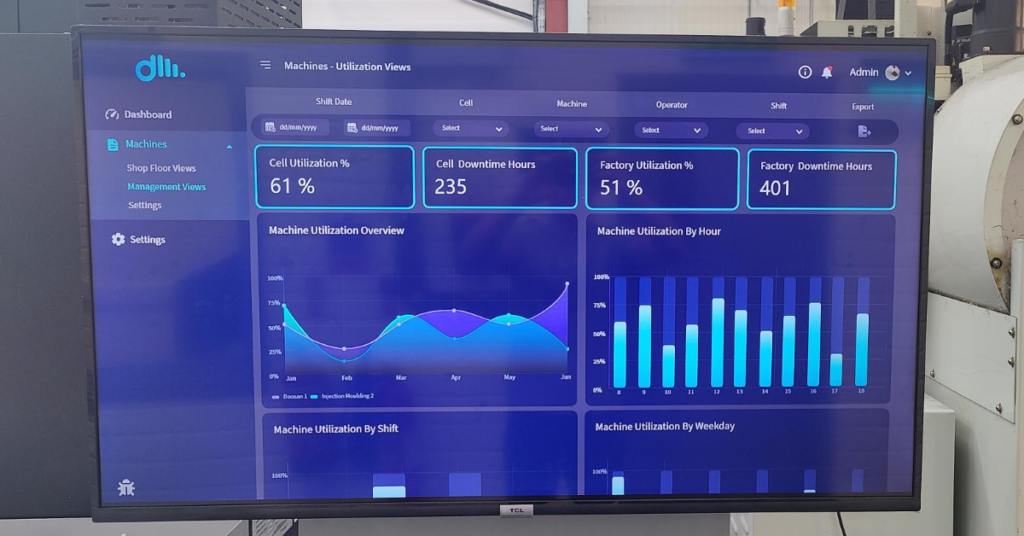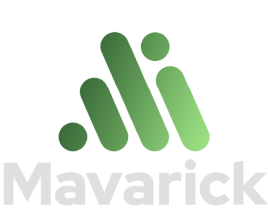At a high level, calculating ROI of any piece of software or hardware is simple: You measure the cost of the goods and services versus the benefits that they provide. Calculating the ROI of Machine monitoring software follows the same rule. You measure the cost of the software versus the benefits.
For machine monitoring software, the benefits are two-fold:
- Cost reductions from machine monitoring software
- Increased revenue
sfrom machine monitoring software
The first point – cost reductions – were addressed in our earlier piece: How to Reduce Manufacturing Costs with Machine Monitoring. Machine monitoring systems help manufacturers find efficiencies on their production floor. These efficiencies reduce the costs of production. We’ll explore the second point here: How to use a machine monitoring system to increase revenue. The key to increasing revenue with a machine monitoring system is finding additional capacity. As it turns out, finding efficiencies on your production floor can help in two ways. Efficiencies can help you reduce the costs of manufacturing, but also can help you find ways to produce more product with the same workforce. This article will focus on helping you to understand how to find additional capacity in your manufacturing operation – And how to calculate the ROI of that additional capacity. To get a bird’s eye view of machine monitoring, check out our Complete Guide to Machine Monitoring.


How can you Increase Revenues by Using a Machine Monitoring System?
At a high level, you can split manufacturing into two disciplines: Discrete manufacturing, and Process manufacturing. According to the Kaizen Institute, Discrete Manufacturing is assembly or fabrication of individual, countable products. Cars, electronics and furniture are examples of discrete manufacturing. Process Manufacturing is the production of goods that cannot be easily separated, divided or distinguished from one another. Especially those that involve chemical, formulaic or other transformational processes. Food, beverages and pharmaceuticals are examples of process manufacturing. As increasing revenues is a key to calculating ROI of machine monitoring, we’ll discuss examples in both Discrete and Process manufacturing below. Both methods seek to increase revenues through an increase in output in manufacturing. You can increase output through finding efficiencies in utilisation.


How to Increase Revenues in Discrete Manufacturing
To increase revenues in a discrete manufacturing operation, we’d want to use the machine monitoring software to find additional capacity. Let’s say your manufacturing operation produces medical devices. Let’s say further that you have 50 machines that typically run for 15 hours per day over a 5-day work week. Suppose that your billing rate for your operation is €100 per hour. Now, let us suppose that through your machine monitoring system you’re able to find efficiencies that uncover a 5% increase in utilisation. That translates to an increase in 0.8 machine hours per day, per machine. Over a year, that adds up to 9,750 machine hours across the factory. At €100 billed per hour, that’s an additional €975,000 in billing per year. Note that a 5% increase in factory utilisation is a conservative estimate. Mavarick discrete manufacturing customers are expected to be able to yield at least a 7.5% increase in utilisation, with some clients achieving between 10-20% increases.
How to Increase Revenues in Process Manufacturing
You’d approach the increased capacity calculations in a similar way for process manufacturing. Let’s say you have a beverage manufacturing operation. What kind of revenue increase might you get from a 3% increase in production capacity? Let’s say you typically produce 10K production units per year at your beverage manufacturing operation. You’re running 4 production lines 7 days a week, producing 32K units per day. If you’re able to uncover a 3% increase in capacity using your machine monitoring system, that translates into an additional 962 units produced per day. Over a years’ time, that’s an additional 350,000 units. If you’re billing €0.50 per unit, that’s €175,000 in additional revenues per year. Note that a 3% increase in capacity is a conservative estimate for process manufacturing. Mavarick process manufacturing customers are expected to be able to achieve at least 5% increase in utilisation, with some clients achieving over 10% .


Other ways to Drive ROI of Machine Monitoring Software
Beyond an increase in output in manufacturing, there are other ways to drive ROI. As mentioned previously, reducing costs is the other way of driving ROI of a machine monitoring system. We explored cost reductions in this blog post: How to Reduce Manufacturing Costs with Machine Monitoring But there are still other ways to drive ROI using a machine monitoring system. Another way to drive top-line revenue through machine monitoring is through more accurate costing. Machine monitoring systems can help you get a better fix on your own costs to produce different orders. This more accurate costing can in turn help you offer your prospective customer lower rates. And those lower rates can help you win more business in competitive marketplaces. Finally – you may be able to drive more top-line revenue through highlighting the sustainability of your manufacturing operation. In today’s economy, brands are under pressure to attain sustainability targets. As Mavarick’s machine monitoring solutions can also enable carbon emissions monitoring and reporting, they can help you understand and tout your sustainability credentials. And this, in turn, can help to drive additional revenues.


How to Calculate ROI of a Machine Monitoring System
For this article, we will concern ourselves solely with deriving ROI by looking at increased revenues. Additional capacity and the revenues they drive are well documented, and relatively straightforward to calculate. Although cost reductions and other drivers of revenue can also factor, we’ll concentrate on the revenue side to keep things simple. However, to calculate ROI of machine monitoring software, we’ll first want to understand the cost of machine monitoring software.
How much does a Machine Monitoring System Cost?
To estimate how much a machine monitoring system costs, first we need to break down how machine monitoring systems are implemented. Implementation of machine monitoring software typically differs for discrete manufacturers versus process manufacturers. In discrete manufacturing, you implement machine monitoring software on a per-machine basis. It is up to you how many and which machines you monitor. For the purposes of this article, we’ll keep it simple and estimate that the cost of monitoring each machine in a discrete manufacturing operation is €500 per year. In process manufacturing, machine monitoring systems are deployed for each production line. For the purposes of this article, we’ll estimate that machine monitoring costs €2500 per line, per year.


ROI of Machine Monitoring – Discrete Manufacturing
For estimating ROI in discrete manufacturing, we’ll continue with the €975,000 in increased revenues that we calculated in the above example. Consider that this increase in production would require no change in the amount of direct labour in a discrete manufacturing operation. You can achieve a 5% increase in capacity simply through greater efficiency of machine utilisation. This means that we would be able to drive the increased €975K with no impact on our costs for direct labour. Similarly, there would be no cost impact on overheads (excluding energy) to generate the increase in machine utilisation. There would be increases, however, in both materials and energy costs. Therefore, we’ll conservatively estimate that this additional output from increased utilisation would yield a profit rate of 15%. Using that figure, we find that we would increase manufacturing profits for those operations by €146,250 annually. Estimating the annual cost of machine monitoring at €500 per machine, this comes to a total of €25K for the entire operation. Comparing this €25K cost to the €146K in additional profit, we find that the ROI of machine monitoring system is 6X the cost of the system. Looking at it from a payback standpoint, we find that the system would pay for itself in under 9 weeks.


ROI of machine Monitoring – Process Manufacturing
As in the above calculation, we’ll continue with the €175,000 figure for the increase in revenues of our process manufacturing operation. This increased €175K came from the production of an additional 350K units. In process manufacturing, our 3% increase in production improvement is assumed to have come without any impact on operating costs. The same production lines are run, for the same amount of time per day. The increase in production efficiency simply delivers more units over that time. Because of this, we can simply apply historical profit margins when calculating the additional profit. In our example, we’re presuming a gross profit margin of €0.20 per unit. Applying this €0.20 profit per unit to the 350K additional units, we find an additional €70K in profit for the processing operation. As we estimate that the 4 production lines cost a total of €10K cost of machine monitoring, this yields a 7X ROI for the processing operation. In payback terms, that would mean the machine monitoring system would pay for itself after only 8 weeks. Get in touch with Mavarick today to learn how to drive ROI of machine monitoring in your manufacturing operation.

